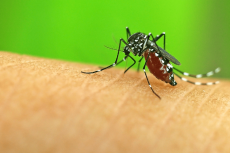- While enjoying a refreshing shower, suddenly, a stream of water sneaks into your ear. What was once a minor inconvenience now becomes a frustrating blockade, leaving you tilting your head in an attempt to dislodge the water.
- When water enters the ear canal, the curved pathway is often clogged. The surface tension that usually allows insects to walk on water causes the water to cling to the canal's walls. This leads to a blocked feeling that muffles hearing and causes discomfort.
We have all experienced it: you are enjoying a refreshing shower when suddenly, a stream of water sneaks into your ear. What was once a minor inconvenience now becomes a frustrating blockade, leaving you tilting your head in an attempt to dislodge the water. Sometimes, it even leads to the comical sight of hopping on one foot, trying to shake off the intruder. The experience is not for one to panic but to face.
Our ears, with their intricate design to funnel sound waves, are naturally prone to trapping water. The outer ear canal, leading to the eardrum, is lined with tiny hair strands and earwax, essential for sound transmission. However, these same structures can create small pockets where water can be stuck.
When water enters the ear canal, the curved pathway is often clogged. The surface tension that usually allows insects to walk on water causes the water to cling to the canal's walls. This leads to a blocked feeling that muffles hearing and causes discomfort.
The scenario should not worry someone; the water is harmless and drains out on its own. What can cause an alarm is the extended stay of the water. It can create a moist environment for bacterial growth, potentially leading to an ear infection.
One common disease is the 'swimmer ear', an infection or inflammation of the canal between the eardrum and the outer ear.
Another consequence of water remaining in the ear for many days is that it can cause pain, redness, and discharge. To avoid underlying issues, you will need to consult a healthcare practitioner.
Here are simple solutions to combat the blockage.
Tilting: tilt your head to the side and gently tug on your earlobe. This straightens the ear canal, allowing water to escape.
The vacuum effect: place the palm of your hand tightly on your ear and push in and out to help water draw out.
Heat and steam: using a warm compress or taking a warm shower can evaporate the water
Trying more water: It is a counterattack that helps to remove trapped water.
The first step is to lie down with the affected ear facing up.
Put a few drops of water in your ear with a clean dropper.
Give it a few seconds and turn it over with the affected ear facing down.
Let the water drain out together with the trapped water.
Considering ear plugs while showering is a much more permanent remedy for those prone to this water blockage. However, as earplugs may be rare among people, general ear cleaning can reduce the potential of trapping water.
While water in the ear can be a minor nuisance, it is vital to understand the science behind it and remedies to avoid discomfort and keep your ear health in check.











